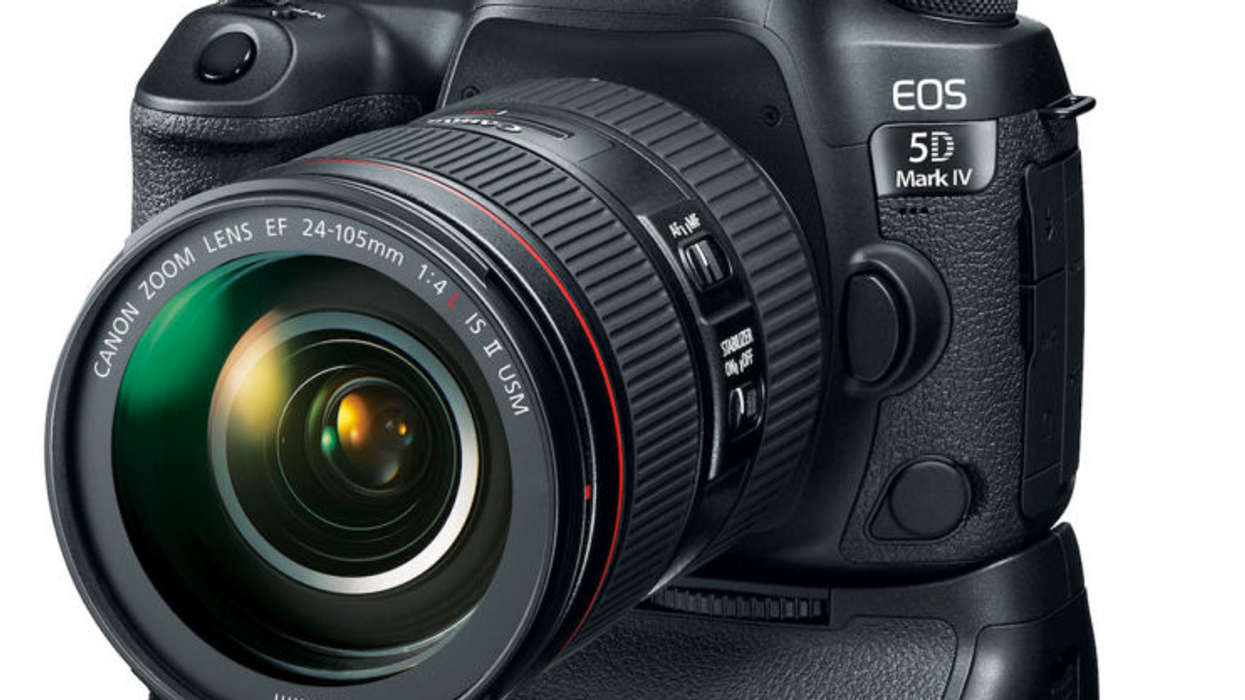Meet the Canon 5D Mark IV Official Release—with Surprise HDR
The newest version of the camera that started it all proves that, to Canon, video remains an afterthought.

When we covered the leak of Canon 5D Mark IV specs last week, some small part of us hoped that maybe Canon might surprise us again with something that was as surprising as the Mark II. After all, these were only leaks. Maybe they had managed to hide the real features we are hoping for from whoever was leaking specs early.
4K was a given, of course; in 2016, that's table stakes. The key would have been an improved codec option beyond the Motion jpeg, which we didn't get, but there is a hint of something interesting in a spec nobody else seems to be talking about: the video HDR mode, available only in 1080p.
To not bring H.265 into the Mark IV is a big missed opportunity.
Canon has focused on a lot of great improvements for still photography, including internal wifi, dual-pixel raw (for fine-tuning focus in post), and a host of new auto-focus improvements. These sound very useful, and if you are a hybrid who is focused mainly on stills with just a little video on the side, this camera is worth a look.
But if you are 100% filmmaker, the lack of H.265 or other advanced codec support is possibly a deal breaker.

Canon uses its own XF codec for recording 4:2:2 50mb/s video wrapped in an MXF format on the C line of cinema cameras, offering Canon Log as well for higher dynamic range. To keep differentiation between platforms, it's understandable not to bring that over to the 5D. The internal processing and record speeds, especially for 4k, aren't what the camera was designed to do. But to not bring H.265—a format available from Samsung on the NX-1 since 2014—into the Mark IV is a big missed opportunity. Most tests see something like half the file size for equivalent image quality with H.265 files versus earlier codecs, which would be a big help as the camera moves to 4k.
The fixed crop is frustrating but understandable, in order to keep processing requirements (and thus heating and cooling problems) within reason. While pixel-binning (and using the full sensor) was always frustrating with the Mark II and III, it does allow you a pretty wide selection of lenses, and the 1.74 crop of 4k on the Mark IV will limit lens selection quite a bit. It would be nice to switch between two modes, like the A7R II from Sony, to use your normal lens selection pixel binned but be able to switch to cropped when you need the low light sensitivity, or when you are shooting particularly moire-prone subjects, like a plaid-suited actor.
How Canon is enabling HDR remains to be seen. RED has long done HDR through multiple exposure durations, which leads to double the file size on your disk and some post-compositing magic to bring the images together; for certain very high-contrast situations, it's well worth it. Since Canon has limited the HDR video format to 1080 only, it seems a reasonable assumption that they are doing something similar, and not simply remapping a broader dynamic range image into the original file. Considering how long RED has had HDR and how little it seems to be used by most filmmakers, who knows if it will be a big draw. But hopefully once indie folks get their hands on it, they'll be able to do some interesting things with all that extra exposure room.
Bandit by Chris Hargety is the first video to be released shot on the Mark IV. The camera is on shelves early September for around $3,500 (body only).
Tech specs
- 30.4MP full-frame CMOS sensor powered by a Digic 6+ processor
- 7fps burst for up to 21 frames of RAW and unlimited JPEG
- QuickTime MOV Motion JPEG DCI 4K (4,096 x 2,160) 2160/30p @ 500Mbps, 720/120p; 1080/30p HDR
- Dual Pixel AF
- 150,000 pixel RGB+IR metering sensor
- WiFi, NFC, and GPS
- ISO 100 to 32000, expandable to 50-102400
- 890 grams (60 grams lighter than the Mark III)
- 1 CF slot, 1 SDXC slot
- 1865 mAh battery life
- 3.2 in/8.1 cm Fixed touchscreen 1.62m dots














